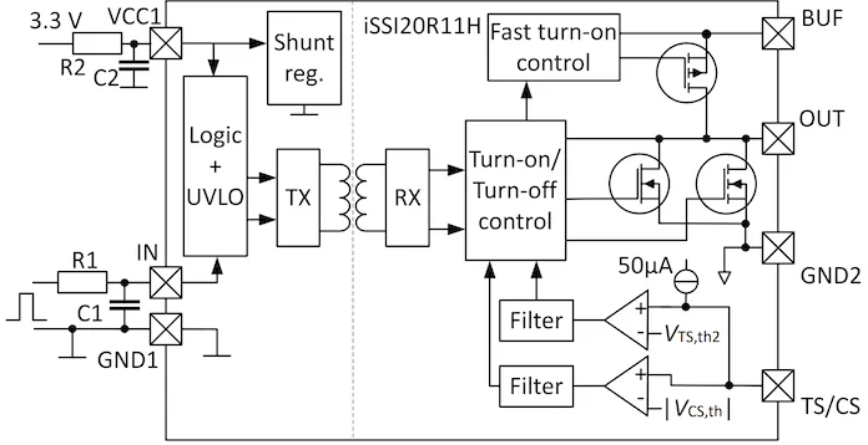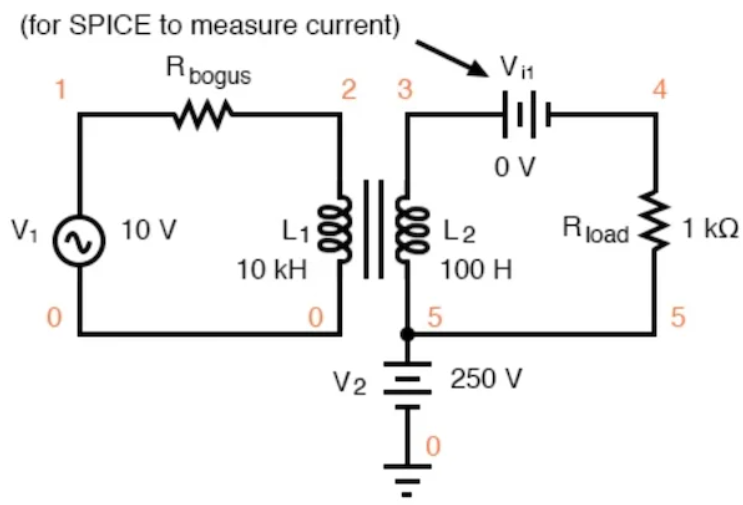Infineon Technologies has launched a new solid-state relay (iSSI) series that uses coreless transformer technology to improve device performance and efficiency.

Infineon's coreless transformer. Image courtesy of Infineon
Infineon launches new solid-state relay
Infineon Technologies has designed a new family of solid-state relays to facilitate faster and more reliable circuit switching. According to the company, the devices offer a set of protection features that go beyond traditional optocoupler solid-state relays (SSRs).
For example, the newly launched solid-state relays support 20 times more energy transfer than previous generations. In addition, these relays have an RDS(on) 50 times lower than existing optocoupler solutions, enabling them to be deployed in applications that require higher voltages and powers. Infineon reports that iSSI provides better performance and reliability than electromagnetic relays by eliminating additional components, resulting in a 40% reduction in startup power.

Block diagram of the iSSI20R11H. Image courtesy of Infineon Technologies
Infineon said the new iSSI series is compatible with other products in the Infineon switch portfolio, including the CoolMOS S7, OptiMOS and linear FET portfolios. For example, when used with Infineon's CoolMOS S7 switch, the relay driver simplifies the switch design, with significantly lower resistance than optocoupler solutions. This means that the system has a longer service life and lower cost of ownership. In applications that drive the gate of Infineon's MOS-controlled power transistors, power consumption can be reduced by up to 70% compared to solid-state relays using silicon-controlled rectifiers (SCRs) and Triac switches.
Infineon's solid-state relays enable custom SSR configurations to control loads exceeding 1,000 V and 100 A. This capability, along with the device's coreless transformer technology, makes the relays ideal for use in advanced battery management systems, energy storage solutions, renewable energy systems, and industrial and building automation applications.
The key to solid state relays
Solid-state relays prevent unwanted current feedback in a variety of systems. This feature is critical in applications ranging from signal processing to power supply design, where maintaining the integrity and isolation of electrical signals is critical.
At the heart of a solid-state relay is the principle of achieving electrical isolation through semiconductor materials. Unlike mechanical relays or optocoupler relays, which may use switching elements or photodiodes as a means of achieving isolation, solid-state relays significantly improve reliability and reduce response time. For example, by employing methods such as capacitive or magnetic coupling within the semiconductor substrate, the relay can effectively block high-voltage transients while allowing the desired signal or power flow to pass unimpeded.

Example of electrical isolation
Solid-state relays offer many advantages over traditional electromechanical relays or photorelays. First, they have no switching parts, minimizing wear and tear, thereby extending service life and improving reliability. They also offer faster response times, which is critical for high-speed signal processing applications. In addition, solid-state relays offer improved performance in terms of size, efficiency, and noise immunity, making them ideal for miniaturized and sensitive electronic systems.
Finally, solid-state relays enhance the safety of electrical systems by providing superior isolation capabilities. This is especially important in medical devices, industrial control systems, and power grid applications, where it is critical to protect sensitive components and operators from high-voltage transients. The ability to integrate these relays into semiconductor chips also fits the trend toward more compact and integrated electronic systems.
Versatile Options for Custom Solid State Relays
With its new iSSI family, Infineon Technologies aims to provide engineers with tools that support more efficient, high-performance high-voltage and power supply designs. Thanks to the coreless transformer design and intentional design compatibility with other Infineon switch products, the new iSSI can effectively replace reed relays and electromechanical relays. Designers can combine iSSI with power switches as flexible circuit elements for custom solid-state relays.
Previous article:Vishay launches new surge current-limiting PTC thermistor to improve active charge and discharge circuit performance
Next article:element14 now selling Abracon's new high performance radial supercapacitors
- Popular Resources
- Popular amplifiers
- MathWorks and NXP Collaborate to Launch Model-Based Design Toolbox for Battery Management Systems
- STMicroelectronics' advanced galvanically isolated gate driver STGAP3S provides flexible protection for IGBTs and SiC MOSFETs
- New diaphragm-free solid-state lithium battery technology is launched: the distance between the positive and negative electrodes is less than 0.000001 meters
- [“Source” Observe the Autumn Series] Application and testing of the next generation of semiconductor gallium oxide device photodetectors
- 采用自主设计封装,绝缘电阻显著提高!ROHM开发出更高电压xEV系统的SiC肖特基势垒二极管
- Will GaN replace SiC? PI's disruptive 1700V InnoMux2 is here to demonstrate
- From Isolation to the Third and a Half Generation: Understanding Naxinwei's Gate Driver IC in One Article
- The appeal of 48 V technology: importance, benefits and key factors in system-level applications
- Important breakthrough in recycling of used lithium-ion batteries
- LED chemical incompatibility test to see which chemicals LEDs can be used with
- Application of ARM9 hardware coprocessor on WinCE embedded motherboard
- What are the key points for selecting rotor flowmeter?
- LM317 high power charger circuit
- A brief analysis of Embest's application and development of embedded medical devices
- Single-phase RC protection circuit
- stm32 PVD programmable voltage monitor
- Introduction and measurement of edge trigger and level trigger of 51 single chip microcomputer
- Improved design of Linux system software shell protection technology
- What to do if the ABB robot protection device stops
- ASML predicts that its revenue in 2030 will exceed 457 billion yuan! Gross profit margin 56-60%
- Detailed explanation of intelligent car body perception system
- How to solve the problem that the servo drive is not enabled
- Why does the servo drive not power on?
- What point should I connect to when the servo is turned on?
- How to turn on the internal enable of Panasonic servo drive?
- What is the rigidity setting of Panasonic servo drive?
- How to change the inertia ratio of Panasonic servo drive
- What is the inertia ratio of the servo motor?
- Is it better for the motor to have a large or small moment of inertia?
- FPGA Implementation of Fully Parallel FFT
- RT-Thread has been ported to W600
- MakeCode now supports STM103
- Please help me with the trip zone configuration of TI's 28034!!!
- EV-HC32F460_1. Unboxing
- The input capture of stm8s cannot enter the interrupt. Please help? ? Thank you!!!
- 10 bit serial controlled analog to digital converter (MS1549)
- [NXP Rapid IoT Review] I2C Program Small Bug
- EEWORLD University Hall ---- e-Network Lecture Hall
- GD32E231 DIY Part 4: Software Architecture

 5534A/BPA
5534A/BPA















 京公网安备 11010802033920号
京公网安备 11010802033920号